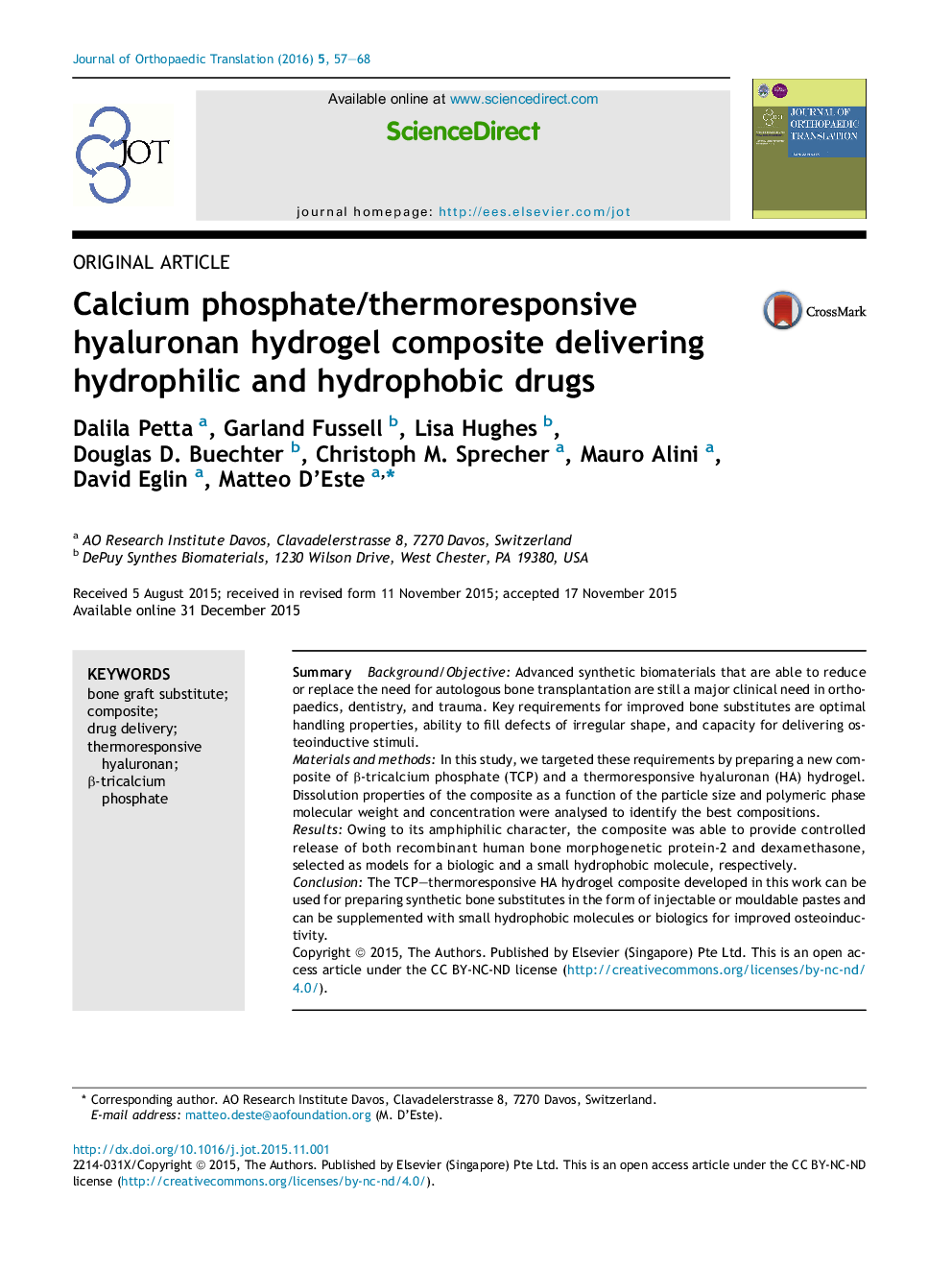| Article ID | Journal | Published Year | Pages | File Type |
|---|---|---|---|---|
| 2739891 | Journal of Orthopaedic Translation | 2016 | 12 Pages |
SummaryBackground/ObjectiveAdvanced synthetic biomaterials that are able to reduce or replace the need for autologous bone transplantation are still a major clinical need in orthopaedics, dentistry, and trauma. Key requirements for improved bone substitutes are optimal handling properties, ability to fill defects of irregular shape, and capacity for delivering osteoinductive stimuli.Materials and methodsIn this study, we targeted these requirements by preparing a new composite of β-tricalcium phosphate (TCP) and a thermoresponsive hyaluronan (HA) hydrogel. Dissolution properties of the composite as a function of the particle size and polymeric phase molecular weight and concentration were analysed to identify the best compositions.ResultsOwing to its amphiphilic character, the composite was able to provide controlled release of both recombinant human bone morphogenetic protein-2 and dexamethasone, selected as models for a biologic and a small hydrophobic molecule, respectively.ConclusionThe TCP–thermoresponsive HA hydrogel composite developed in this work can be used for preparing synthetic bone substitutes in the form of injectable or mouldable pastes and can be supplemented with small hydrophobic molecules or biologics for improved osteoinductivity.
